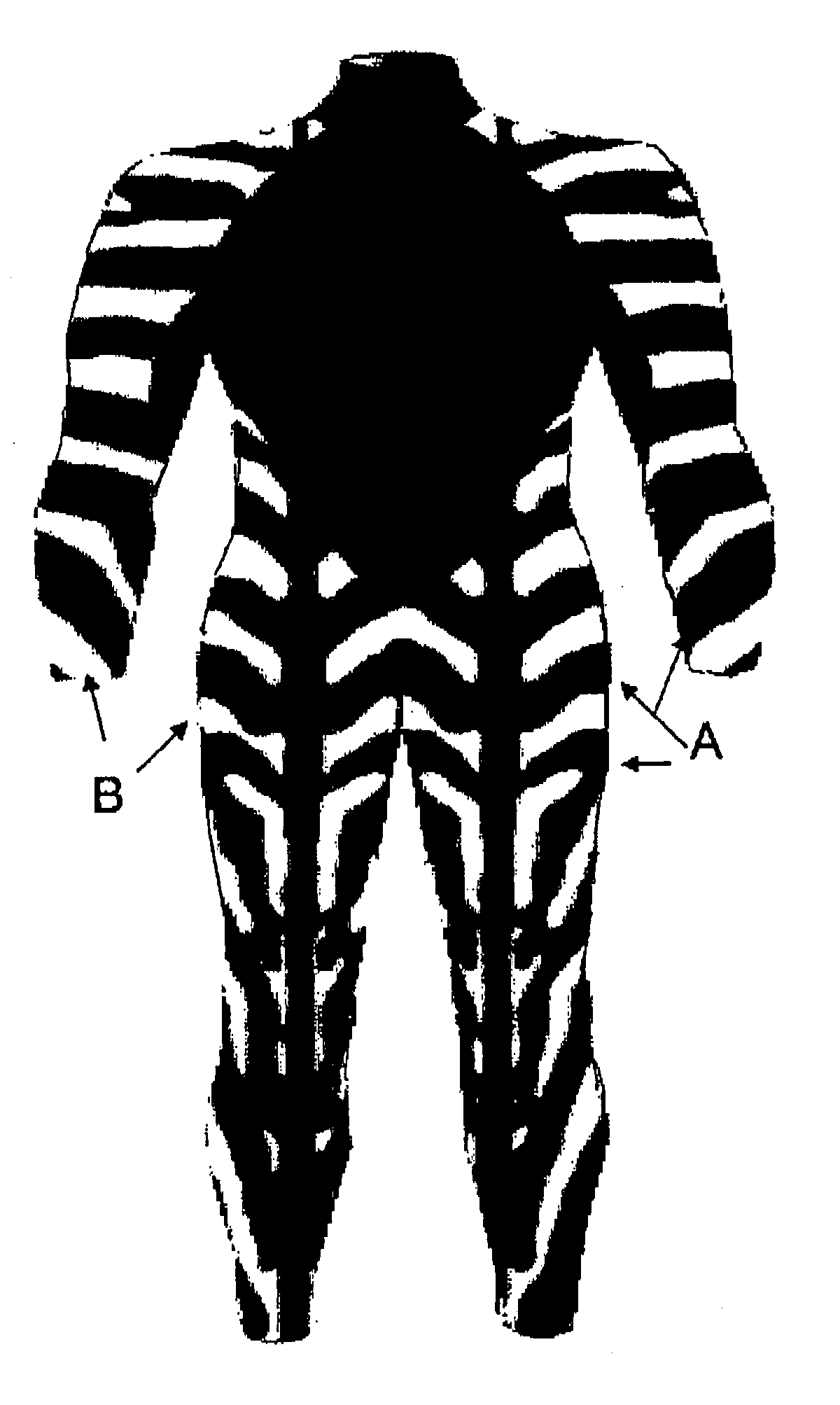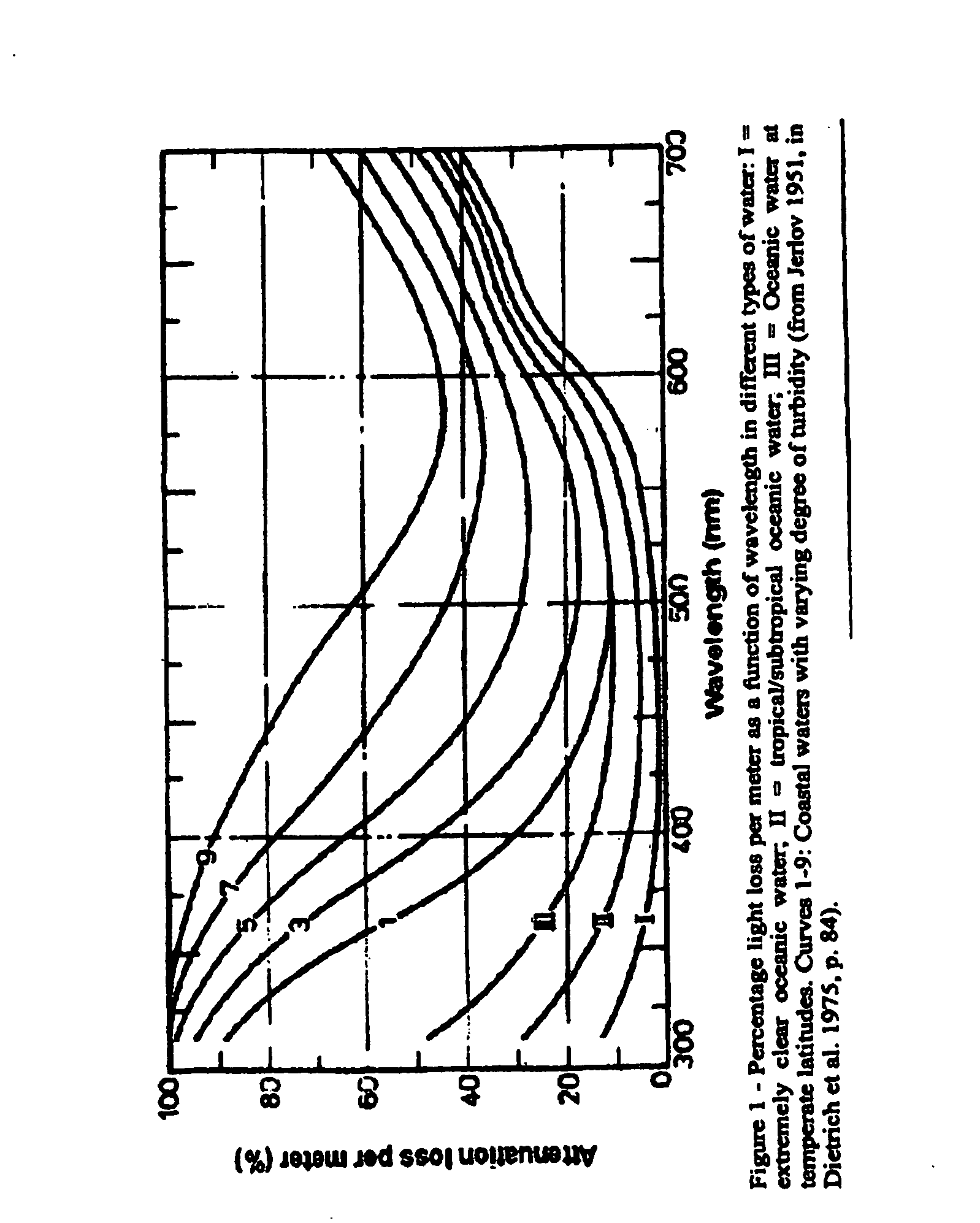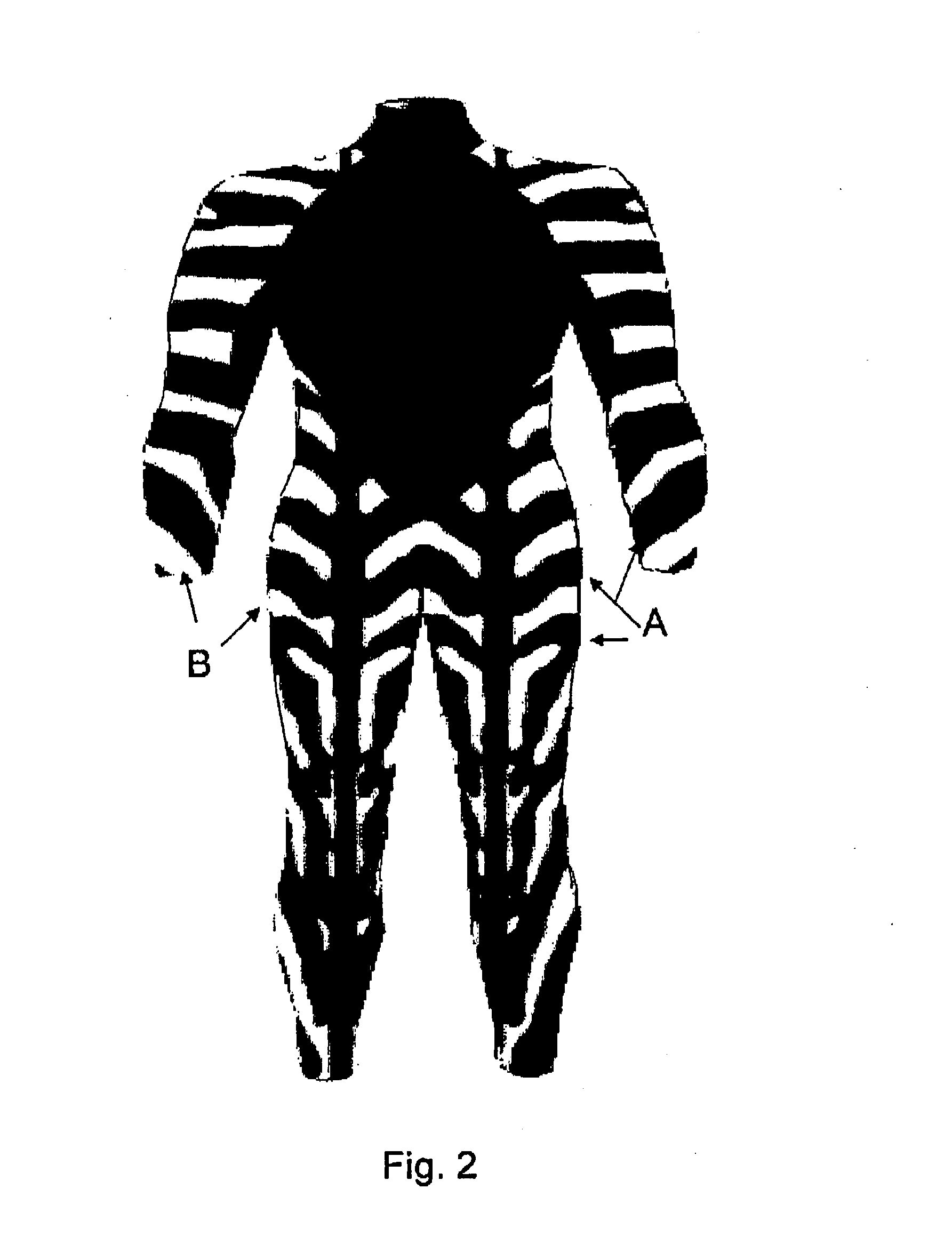Mimetic gear
a technology of imitation gear and gear, applied in the field of imitation gear, can solve the problems of being in confrontation with large and/or dangerous predatory animals, being in unexpected confrontation with potential aquatic predators, and being in the face of large predatory animals
- Summary
- Abstract
- Description
- Claims
- Application Information
AI Technical Summary
Benefits of technology
Problems solved by technology
Method used
Image
Examples
example 1
[0107] A wetsuit having a coloration pattern that is about 80% identical to a juvenile form of the parrotfish Scarus taeniopterus (and having the appropriate UV reflectance) can be applied to a human mannequin. The mannequin can then be immersed in water in a location known to contain a high concentration of aquatic predators (tiger sharks, bull sharks, great white sharks, etc.). Preferably, the gear can be immersed with an underwater camera to observe the reaction of the aquatic predators. to the presence of the mannequin and the effect of the coloration pattern of the wetsuit. Additionally, a “control” piece of gear, (i.e. a mannequin wearing a black wetsuit) can also be present for comparative purposes. Preferably, the mannequin can be slowly trolled behind a boat either below or on the surface of the water.
[0108] During the trolling of the mannequin, the underwater cameras can observe aquatic predators behavior toward the mannequin by monitoring variables which can include, but...
example 2
[0109] The mannequin wearing a wetsuit selected as described in Example 1 can be positioned in water as described above, and using underwater cameras, the reaction of generally passive aquatic animals can be observed by monitoring variables which can include but are not limited to approach distance and aggressive / territorial behavior. Accordingly, coloration patterns which 1) minimize approach distance (and thereby show a minimizing of any avoidance response induced by the coloration pattern or provide indicia of “attractiveness” of the coloration pattern) and 2) minimize aggressive / territorial behavior, are considered desirable.
example 3
[0110] A database of coloration, pattern, animal type and animal type reaction (aggressive, territorial, etc.) toward the coloration pattern can be developed. Such a database can be useful for the customization of coloration patterns to meet the particular needs of wearers of coloration patterns of the present invention. For example, a particular pattern can be developed and stored in the database that has particular application to underwater hunters, such as a pattern which is attractive to hogfish and / or other game fish.
[0111] In some embodiments, a coloration pattern of the present invention can also be applied to boats, surfboards, windsurfing boards and the like.
PUM
 Login to View More
Login to View More Abstract
Description
Claims
Application Information
 Login to View More
Login to View More - R&D
- Intellectual Property
- Life Sciences
- Materials
- Tech Scout
- Unparalleled Data Quality
- Higher Quality Content
- 60% Fewer Hallucinations
Browse by: Latest US Patents, China's latest patents, Technical Efficacy Thesaurus, Application Domain, Technology Topic, Popular Technical Reports.
© 2025 PatSnap. All rights reserved.Legal|Privacy policy|Modern Slavery Act Transparency Statement|Sitemap|About US| Contact US: help@patsnap.com



